Knowledge
Measurements on Live Cells with QNM

The mechanical properties often affect their structure and functional activity very important to biologists
Toward Quantitative Nanomechanical Measurements
on Live Cells with PeakForce QNM
Measuring and mapping mechanical properties of live cells is of high importance in today’s biological research. Atomic force microscopy has been recognized since the mid-eighties as an excellent technique to image a wide range of samples in their near-natural environment. Although the primary function of atomic force microscopy is to generate a three-dimensional (3D) profile of the scanned surface, much more information is available through the technique. TappingMode™, which was developed in 1993, prevents tip and sample damage from friction and shear forces, and allows qualitative mechanical property mapping through phase imaging. Around the same time, force spectroscopy and force volume were developed to study tip-sample forces at a point, or over an area respectively. Traditionally, force spectroscopy and force volume are the most commonly used modes to quantitatively measure mechanical forces at the nanometer scale. Unfortunately, both techniques have suffered from slow acquisition speed and a lack of automated tools to analyze the hundreds to thousands of curves required for good statistics.
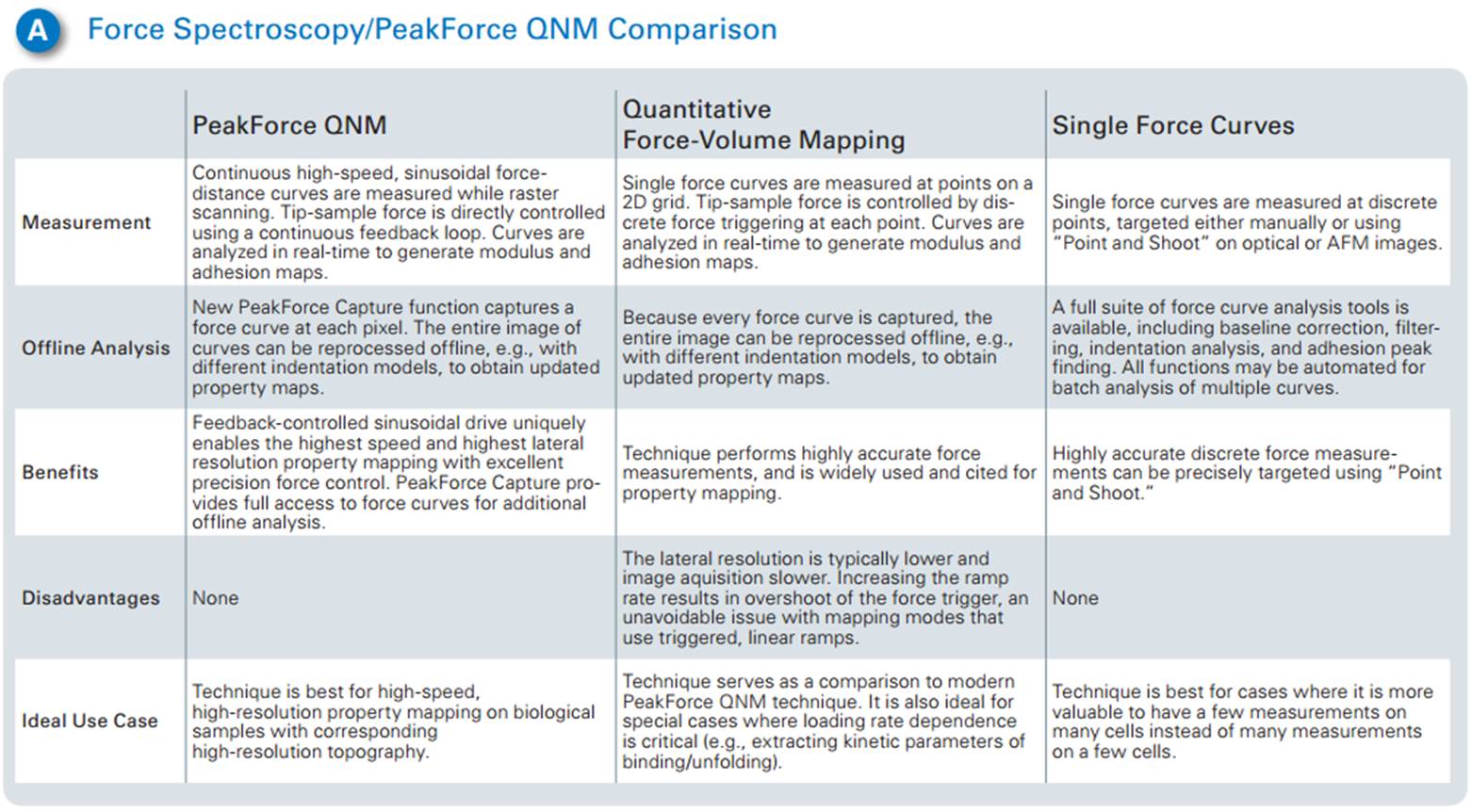
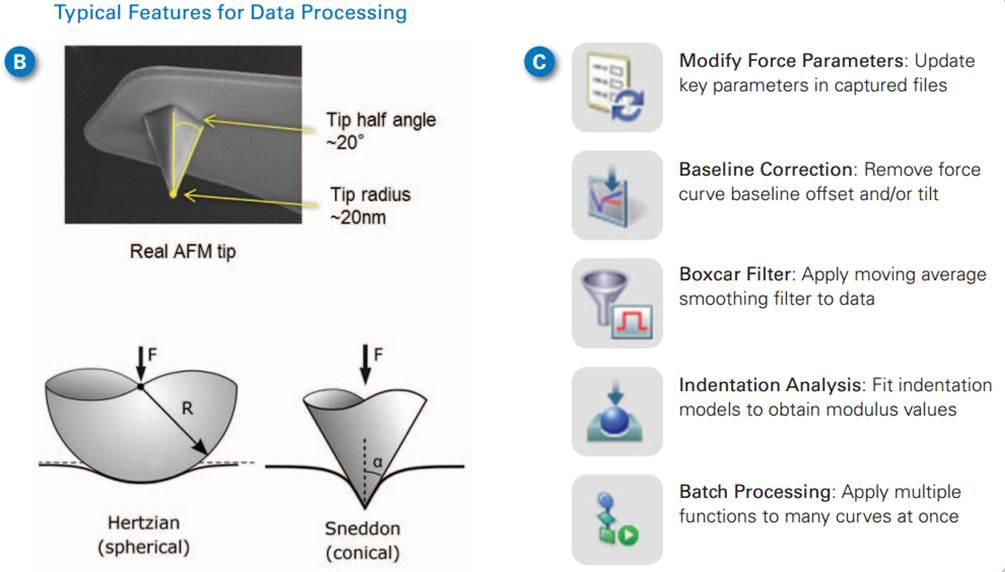
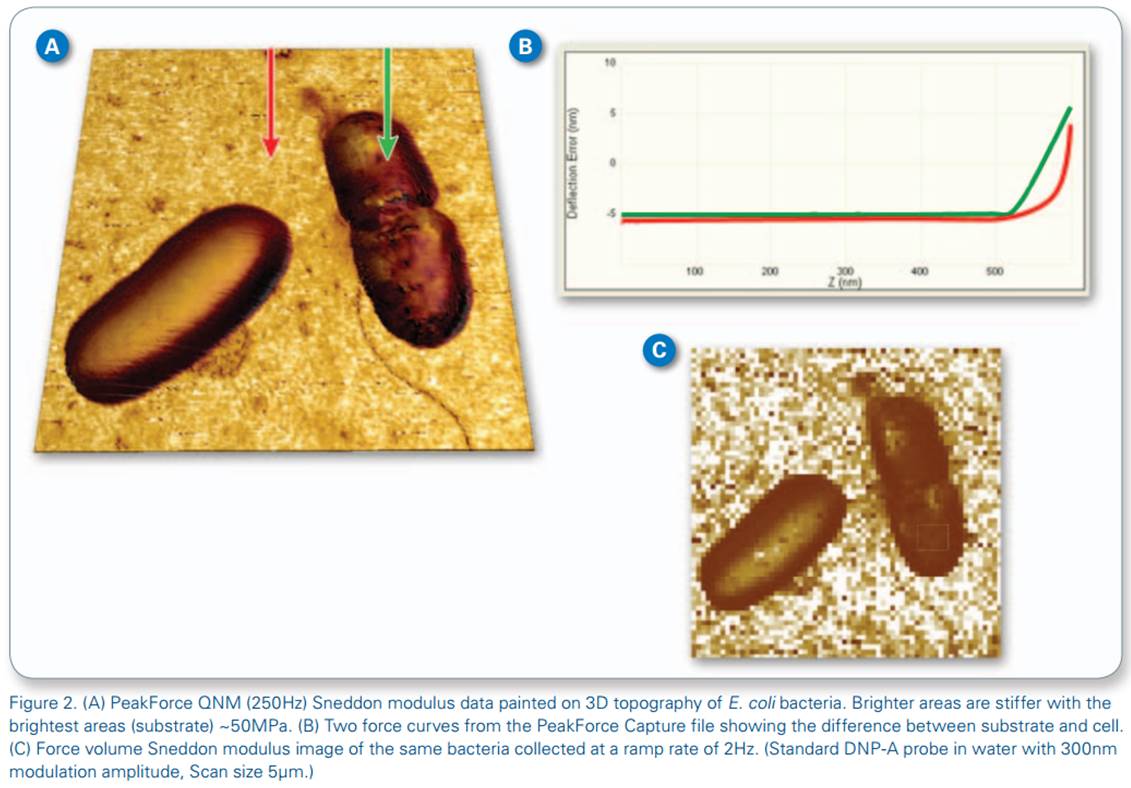
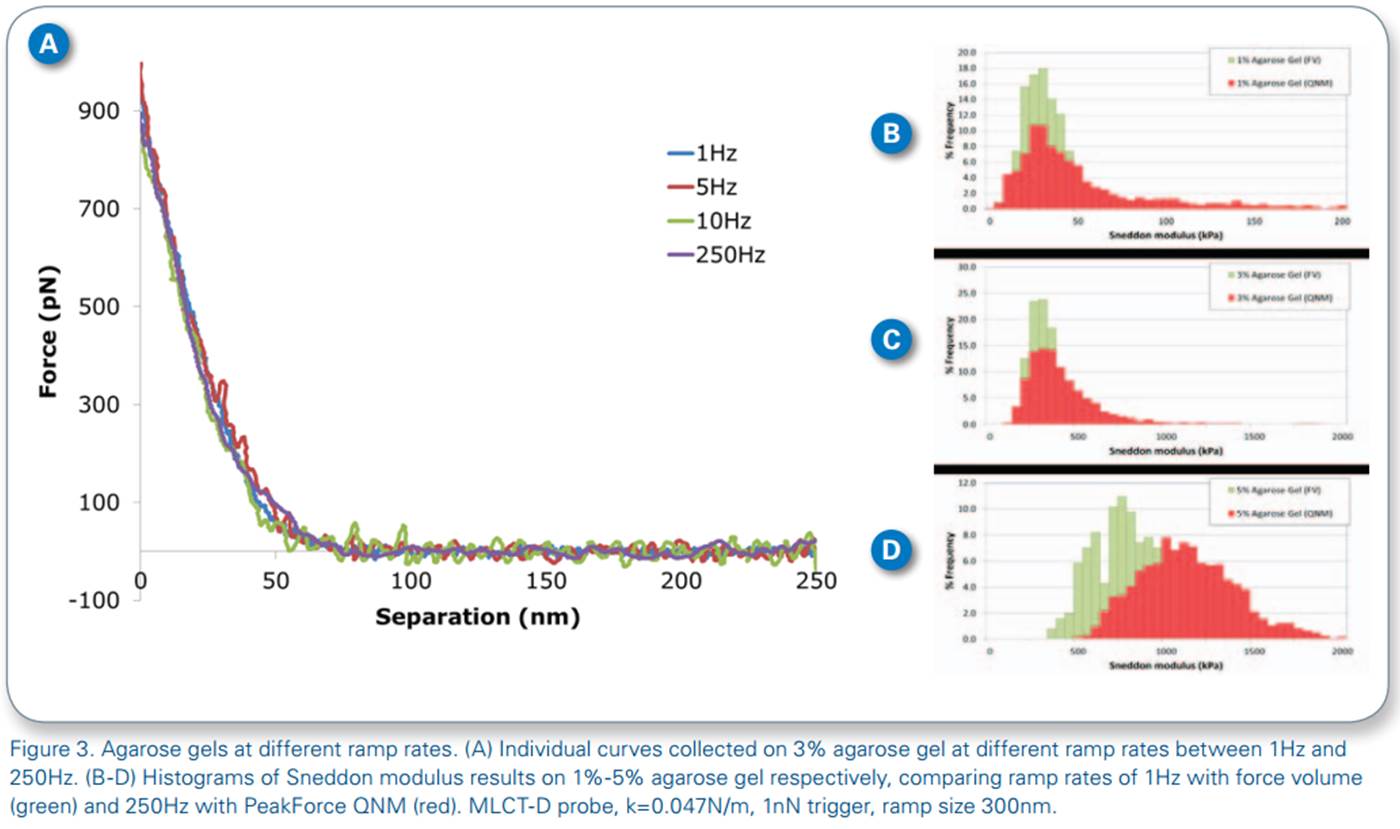
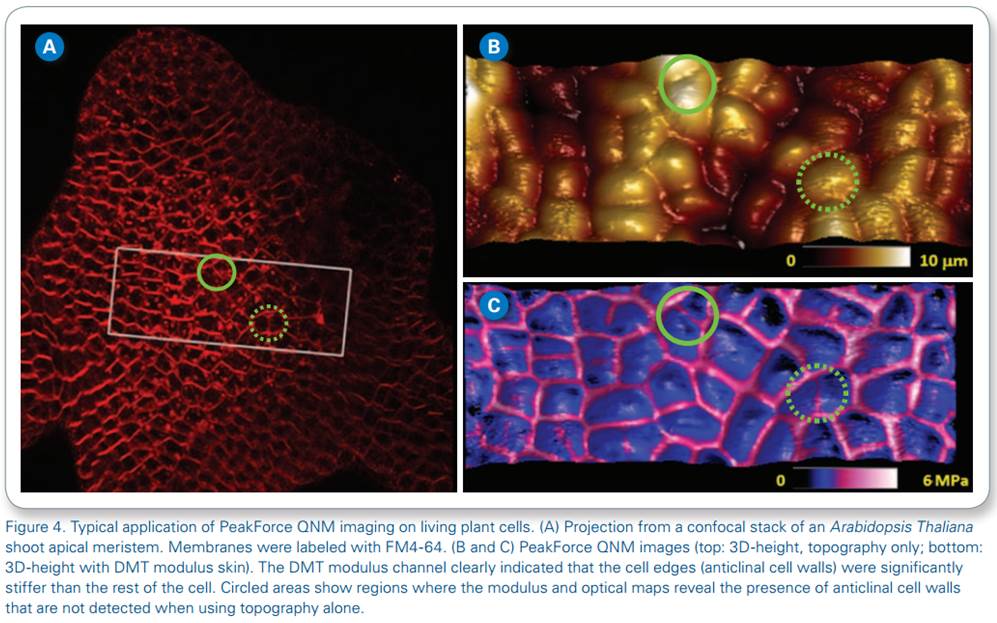
The recent release of PeakForce QNM® resolves these limitations and can provide better results in terms of resolution, speed, ease-of-use, and quality of delivered information.5 PeakForce QNM is based on Bruker’s PeakForce Tapping™ mode, which oscillates the probe at about 1kHz, and which uses the peak force (maximum nominal force applied to the sample) for feedback control. Each time the tip interacts with the sample, a force curve is collected and analyzed by PeakForce QNM. The resulting signals are extracted and quantitatively displayed as a falsecolored image in real-time. Currently available data types include peak force, adhesion, Young’s modulus, deformation and dissipation. This mode has been successfully tested on a wide range of samples,6 from bio-polymers7,8 and live eukaryotic cells9 to human models.
This application note reviews recent progress in mapping the properties of soft samples such as cells and gels with force volume and PeakForce QNM and the use of the newest NanoScope® and NanoScope Analysis features to collect and analyze the data from these techniques.
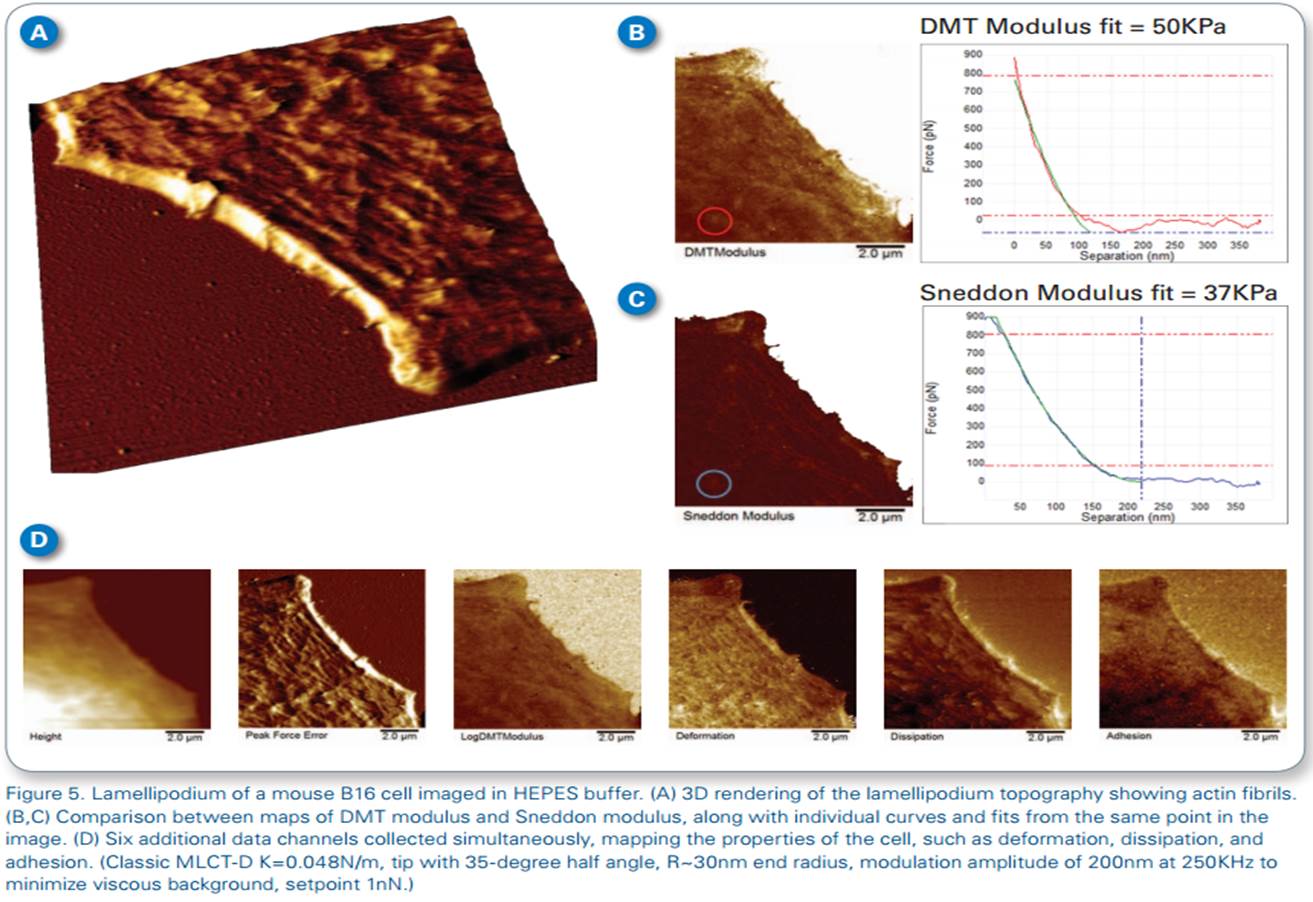
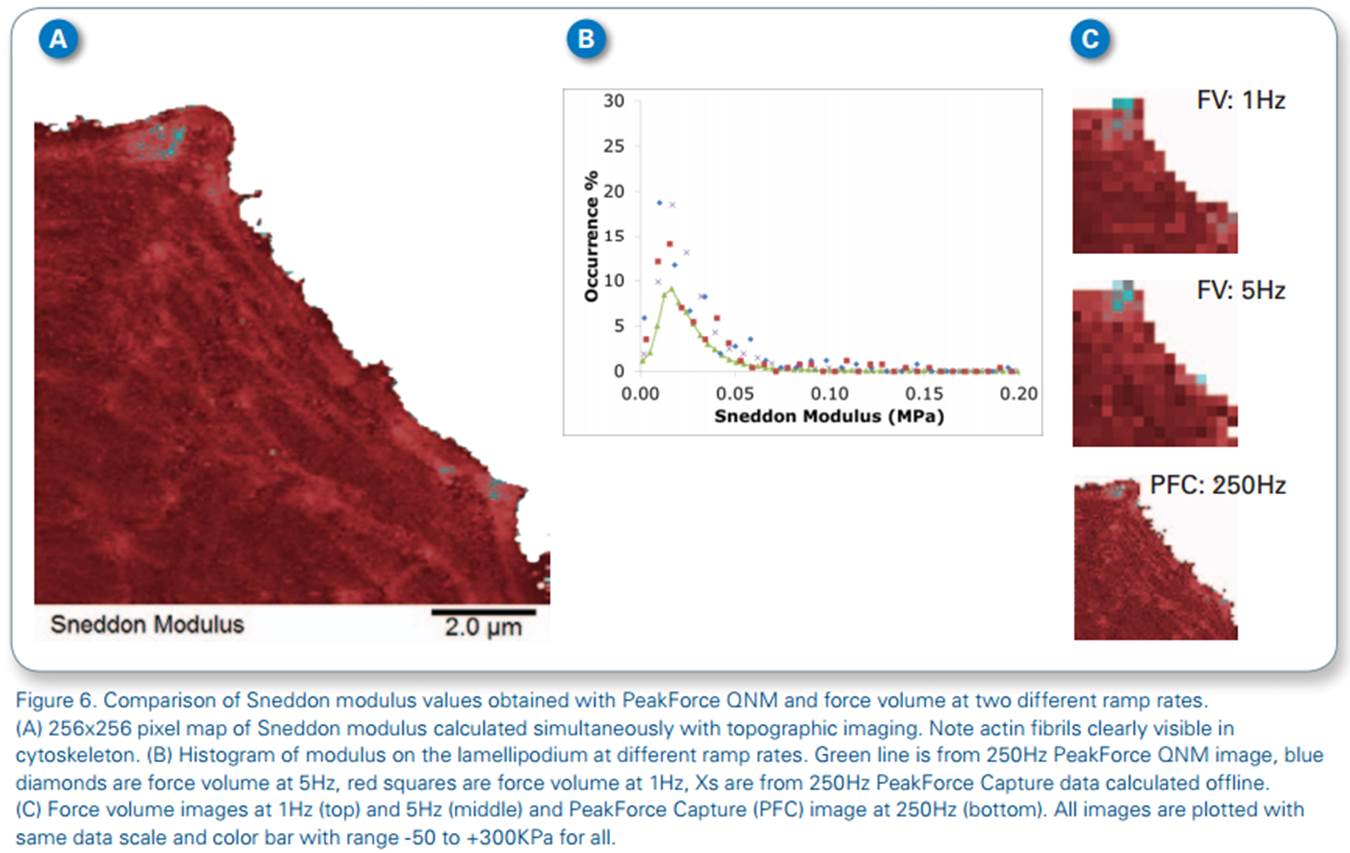
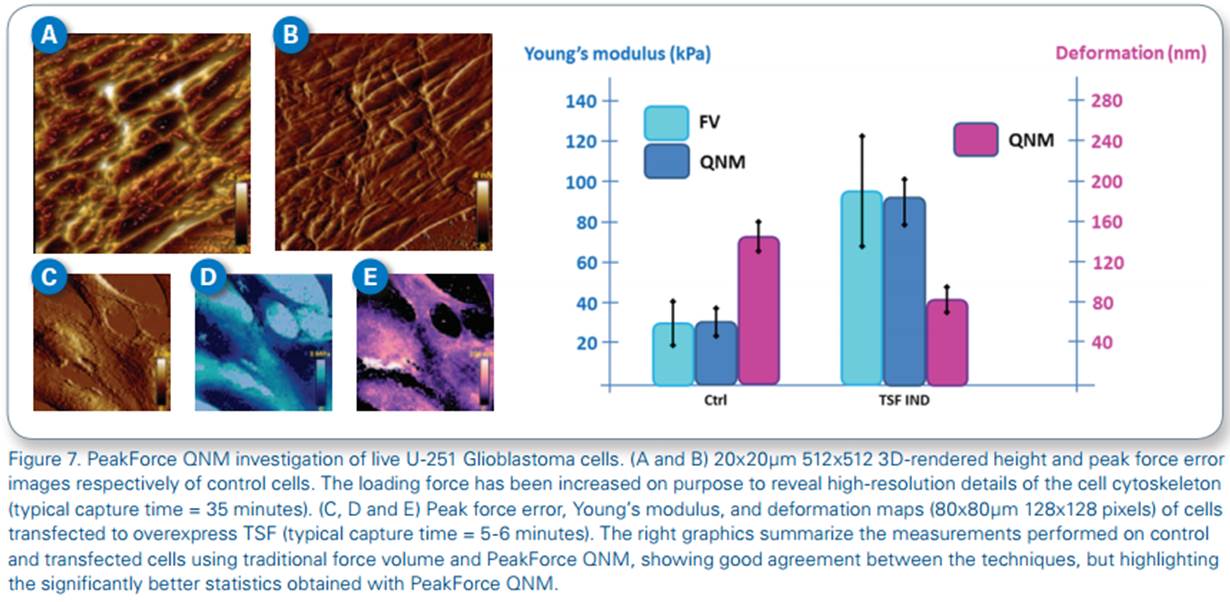
Conclusion
The mechanical properties of biological samples often affect their structure and functional activity and are, hence, very important to biologists. Force volume has been accepted since the mid-1990s as a powerful tool for measuring and mapping the mechanical properties of biological samples. Force volume is optimized for mapping with low ramp rates (~0.5–10Hz) and relatively low resolution. PeakForce QNM improves upon force volume in terms of resolution and speed (with ramp rates ~250Hz–2KHz), making it more detail and statistics. Together, force volume and PeakForce QNM provide new opportunities for comparisons of material response at over about four orders of magnitude of ramp rate in air or liquid environments. In addition, the new features of NanoScope and NanoScope Analysis offer the user a maximum of ease-of-use and flexibility to collect, process, and analyze the thousands of force curves in a typical force volume or PeakForce QNM map. practical to collect and analyze much more data for better
Credit : Bruker Co., Ltd.
Contact us
388/5 Nuanchan Road, Nuanchan,
Buengkum, Bangkok 10230
0 2363 8585 (auto)
0 2363 8595
081 498 9939






